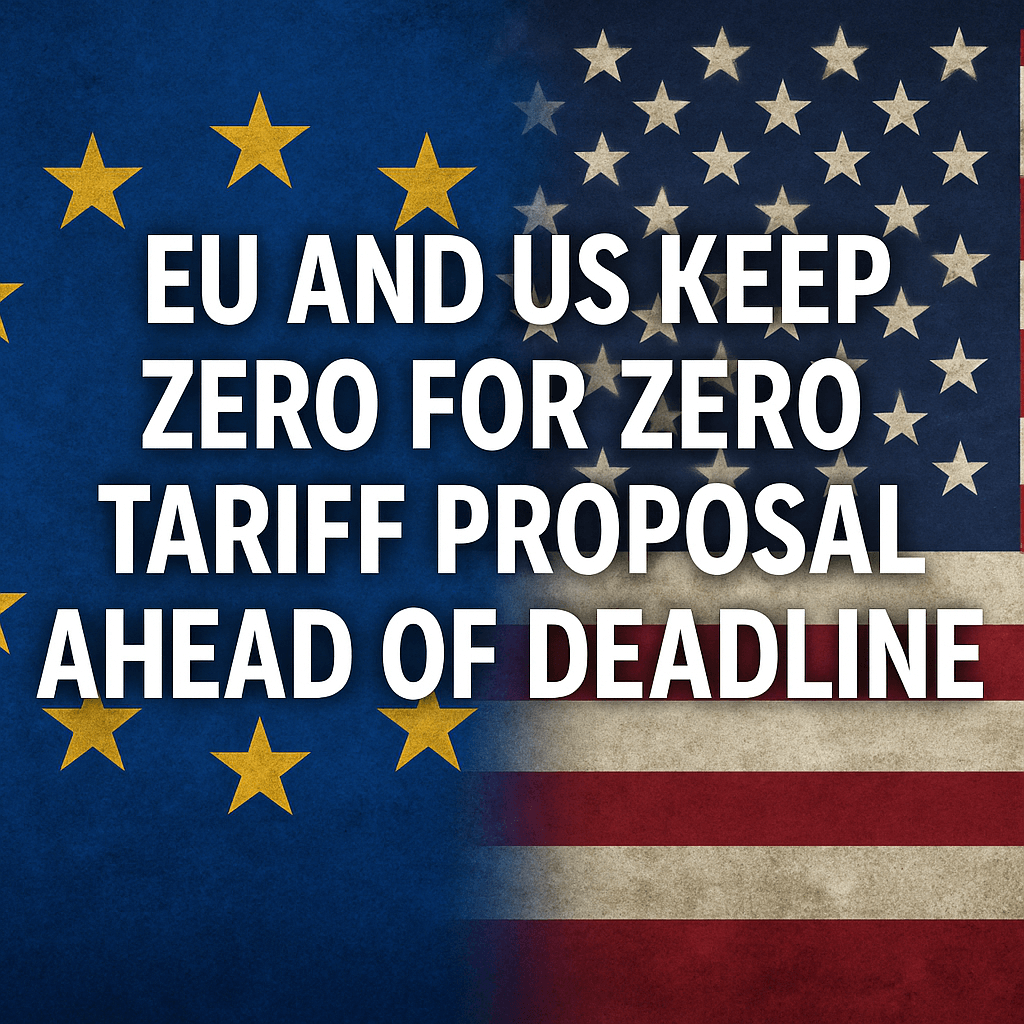EU and US Keep Zero-for-Zero Tariff Proposal Ahead of Deadline

Overview of Ongoing Trade Tensions
The European Union and the United States remain locked in a high-stakes negotiation over tariffs and non-tariff barriers more than three months after the dispute erupted. Despite repeated threats by US President Donald Trump to impose 50% duties on all EU goods, Brussels has held firm on its so-called zero-for-zero reciprocity plan—eliminating existing tariffs and non-tariff measures in parallel on both sides of the Atlantic.
Details of the Zero-for-Zero Proposal
Under the zero-for-zero framework, each side would remove applied tariff lines and negotiate a harmonised rulebook for product standards and customs procedures. Key technical elements include:
- Non-Tariff Measures (NTMs): Alignment of sanitary and phytosanitary standards, mutual recognition of technical regulations, and streamlined customs valuation rules.
- Sectoral Commitments: EU offer to import up to 50 billion cubic metres of US liquefied natural gas (LNG) annually under long-term contracts; US commitment to lift hurdles on EU automotive-type approvals and data localization rules.
- Agricultural Quotas: Tariff-rate quotas for US soybeans, corn, and meat products to address EU farm sensitivities, balanced by EU exports of olive oil, wine and dairy to the US market.
Tariff Schedules and Trade Volumes
Currently, Washington applies 25% duties on steel and aluminium from the EU, 10% on cars and most industrial goods, and blanket 10% on other EU imports—impacting roughly €300 billion in annual trade. The EU’s suspended retaliation package covers up to €21 billion of US exports, with a second bucket of €95 billion under discussion if talks fail.
Recent Developments
Last week Brussels and Washington exchanged formal negotiation letters. EU Trade Spokesperson Olof Gill reiterated on Monday:
‘The zero-for-zero approach is very much still on the table. We believe it’s an attractive starting point for a negotiation that delivers mutual benefits.’
President Trump, reacting on his social platform Truth, warned: ‘Our discussions are going nowhere! Therefore I recommend a straight 50% Tariff on the European Union, starting on June 1, 2025.’ After a phone call with Commission President Ursula von der Leyen on Sunday, he agreed to delay the threatened duties until 9 July and to fast-track negotiations.
Expert Opinions
Global trade analysts point to World Trade Organization (WTO) rules on Most Favoured Nation (MFN) status as a legal backstop. According to Dr. Elena Martínez of the Institute for International Economics, ‘An accord on non-tariff barriers could deliver up to €40 billion in annual GDP gains across both economies by reducing red tape and improving supply chain resilience.’ However, Richard Ford, chief economist at Atlantic Insights, warns that ‘Domestic political cycles in both capitals may derail the deal unless negotiators secure interim deliverables on industrial goods.’
Deeper Analysis: Impact on Automotive and Tech Supply Chains
The auto sector is particularly exposed. EU carmakers exported €60 billion of vehicles to the US in 2023, while American semiconductor firms rely on EU-made packaging and testing services worth €15 billion. Harmonising type-approval regulations and lowering duties could reduce import unit costs by 8–12%, according to a recent ImpactEconomics study.
Deeper Analysis: Macro-Economic Implications
Beyond sectoral effects, an agreement would alleviate inflationary pressures driven by higher input costs. The ECB estimates that removing tariffs could lift euro-area GDP by up to 0.3% this year, while the US Federal Reserve might see a modest reduction in headline PCE inflation of 10–20 basis points—potentially influencing policy rate decisions.
Next Steps and Outlook
- By July 9: Presidents Trump and von der Leyen to reconfirm suspension of proposed 50% tariffs.
- Mid-July: Technical working groups on automotive, energy and agriculture convene in Brussels.
- Q3 2024: Draft text exchanged for public consultation among EU member states and US stakeholders.
- Late 2024: Final political endorsement expected, conditional on domestic legislative reviews in both jurisdictions.
Commission Chief Spokesperson Paula Pino commented: ‘Both sides agree to stay in close contact and expedite each phase of the negotiation.’ Meanwhile, EU Trade Commissioner Maroš Šefčovič and US Trade Representative Katherine Tai are slated to hold a video summit later this week to refine technical annexes.